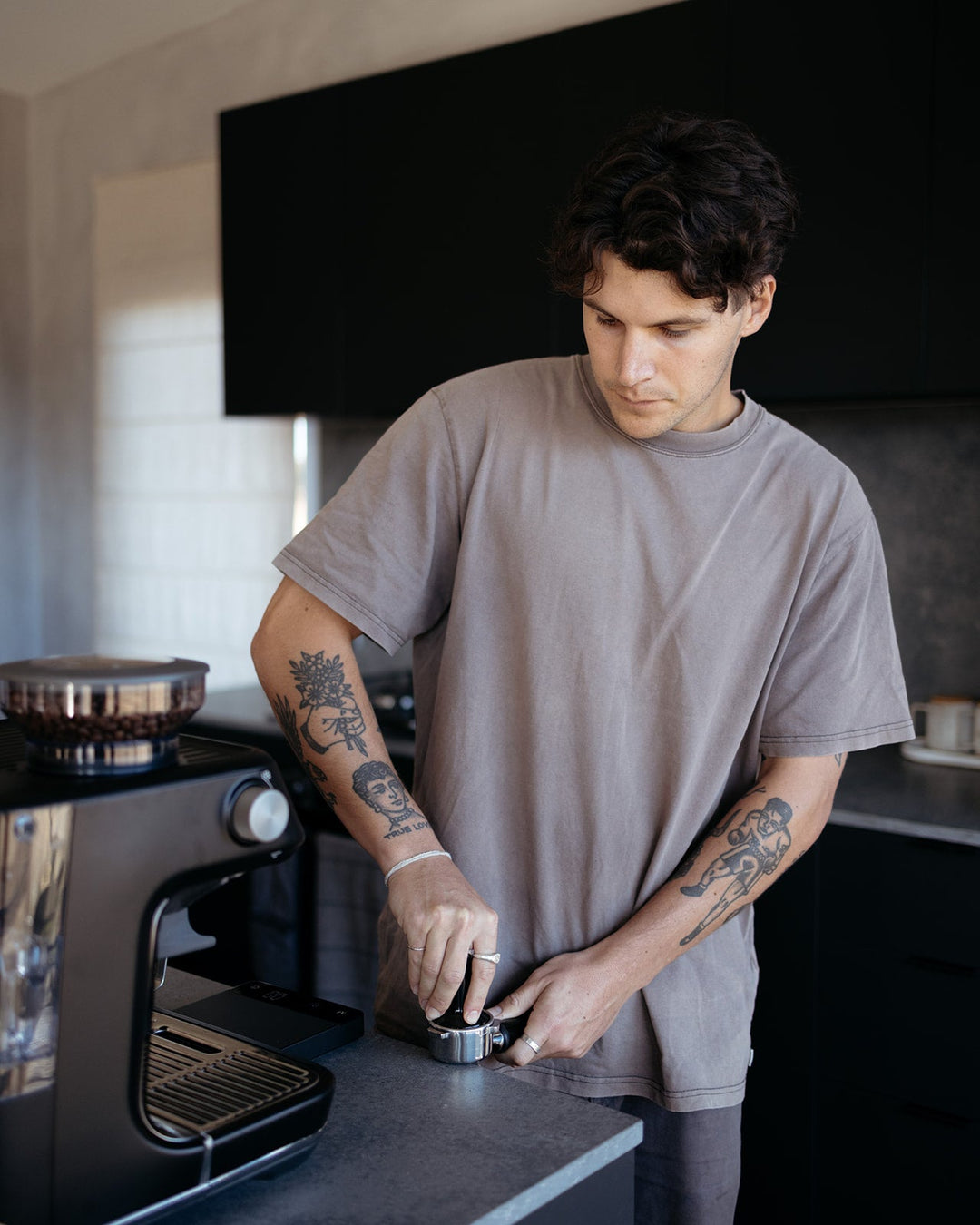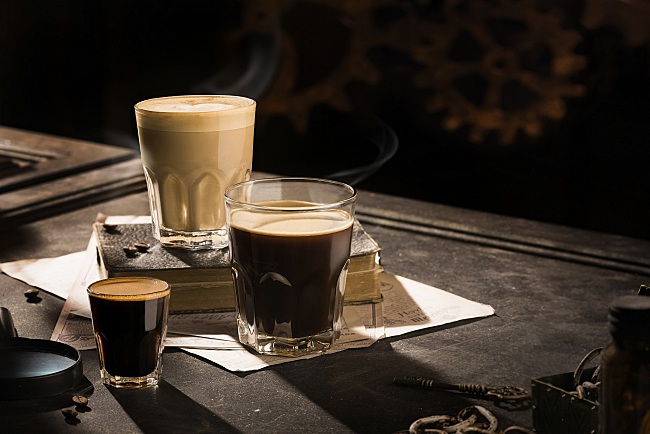SOE Single Origin Espresso – Highlighting Flavors from One Region
SOE Single Origin Espresso – Highlighting Flavors from One Region
Blog Article
Checking Out the Rich Tastes of Coffee Beans: a Deep Study Coffee and Blended Coffee Beans
When you check out the rich flavors of coffee beans, you uncover a complex world where each variety brings its very own personality to your cup. As you browse with the art of espresso and the creative thinking behind mixed coffees, you'll start to appreciate the nuances that make each sip one-of-a-kind.
The Origins of Coffee Beans: Discovering Terroir and Taste Profiles
When you take a sip of coffee, you're not just enjoying a beverage; you're experiencing a rich tapestry of tastes formed by the beans' beginnings. Each region generates special taste profiles affected by dirt, climate, and elevation. Beans from Ethiopia commonly burst with bright, fruity notes, while those from Colombia have a tendency to offer a well balanced, nutty sweetness.
As you explore different beginnings, you'll see how terroir-- the ecological variables influencing a crop-- plays an essential duty - Single Origin Espresso. The same coffee selection can taste considerably various depending upon where it's expanded
When you think about these aspects, you start to value the intricacy behind your mug. Each sip tells a story of the land and the farmers who supported the beans. Next time you delight, believe regarding the journey your coffee took prior to it reached your hands, and enjoy those detailed flavors that show its origin.
Recognizing Espresso: The Art and Science Behind the Mixture
When you think of coffee, it's not just about the strong flavor; it's additionally concerning the techniques that bring it to life. Understanding just how various preparation techniques impact taste can change your developing experience. Let's discover the complexities of espresso preparation and reveal the one-of-a-kind flavor accounts that make each mug unique.
Espresso Prep Work Methods
Coffee prep work is both a scientific research and an art, integrating specific strategies with a deep understanding of coffee. To begin, you'll intend to pick premium, newly roasted beans and grind them carefully for suitable extraction (Single Origin Espresso). The work size is important; as well rugged, and your coffee will be weak, as well great, and it'll be bitter
Next, tamp the premises equally in the portafilter to guarantee consistent extraction. When you secure it into the machine, go for a developing temperature in between 190 ° F and 205 °
F.As you draw the shot, look for the ideal extraction time-- around 25-30 seconds. The result ought to be an abundant, velvety coffee with a gorgeous layer of crema ahead. With method, you'll master these techniques.
Flavor Profiles Discussed
The globe of coffee supplies an abundant tapestry of flavor accounts that can boost your coffee experience. Light roasts usually display brilliant level of acidity and dynamic tastes, while dark roasts existing deeper, bolder tones.
Understanding these profiles aids you choose the appropriate coffee for your taste. Explore various blends can disclose shocking combinations. A well-crafted blend might harmonize the intense notes of an Ethiopian bean with the abundant, chocolatey touches of a Brazilian bean. Welcome the journey of finding espresso's diverse tastes, and you'll change your coffee routine right into an interesting experience.
Handling Approaches: How They Influence Taste and Aroma
While it may seem that the origin of coffee beans is the most considerable consider establishing their flavor and aroma, the processing approaches utilized post-harvest play an equally essential role. You'll discover that these methods can considerably change the last taste profile of your cup.
As an example, the washed procedure removes the fruit from the beans before fermentation, often resulting in a cleaner, brighter taste. Meanwhile, the natural procedure leaves the fruit intact during drying, causing a sweeter, fruitier profile.
Other methods, like honey handling, strike an equilibrium, allowing some fruit mucilage to stay, providing a distinct complexity.
Each processing method communicates with the beans' intrinsic qualities, improving or silencing details tastes and fragrances. When you drink that espresso or mixed coffee, keep in mind that the trip from cherry to mug is affected not simply by beginning however additionally by just how those beans were processed.
Toasting Techniques: Unlocking the Complete Prospective of Coffee Beans
Roasting strategies are necessary for exposing the complete potential of coffee beans, as they change raw, environment-friendly beans right into the aromatic, delicious coffee you enjoy. The selection of roasting method-- light, tool, or dark-- considerably affects flavor profiles.
A slower roast at reduced temperatures allows for complicated tastes to develop, while a quicker roast can magnify bitterness. By grasping these methods, you'll reveal a world of taste, elevating your coffee experience to brand-new heights.
The Magic of Blended Coffee: Developing One-of-a-kind Flavor Experiences
Creating an unique taste experience with mixed coffee can transform your morning routine into an expedition of taste. By integrating different beans from different regions, you can disclose a harmony of tastes that boost your cup to brand-new elevations. Each mix deals a distinctive have a peek at this site profile, balancing body, level of acidity, and sweet taste to develop something really unique.
When you pick a mix, you're not just selecting a coffee; you're choosing a trip throughout varied landscapes and cultures. Explore different combinations permits you to uncover your individual faves, whether you take pleasure in fruity notes or rich, chocolatey touches.

Tasting Notes: Identifying the Nuances in Your Mug
As you drink your coffee, you may see a spectrum of flavors dancing on your palate, each disclosing the intricacies of the beans. You might taste the brilliant acidity evocative citrus or the deep, abundant notes similar to dark chocolate. The sweetness might evoke honey or caramel, stabilizing the total profile magnificently.
Take note of the body of the coffee-- does it feel light and airy, or is it full and velvety? The surface, also, provides ideas; a sticking around aftertaste might mean nuttiness or floral touches.

Don't forget to check out the distinct qualities of various beginnings, as each area passes on unique tastes - Single Origin Espresso. For example, Ethiopian coffees usually present fruity notes, while Colombian beans may display an extra spherical sweet taste. By identifying these subtleties, you'll strengthen your admiration for each and every mug, elevating your coffee experience to brand-new heights

Brewing Approaches: Making The Most Of Taste Extraction for each Bean
When you check out the different developing techniques, you'll discover that each strategy can dramatically influence the taste profile of your coffee. From French press to pour-over, each method removes various compounds, improving or muting particular notes. Using a French press enables oils to continue to be in the brew, creating a richer taste, while pour-over emphasizes quality and illumination.
Temperature and grind size likewise play important duties. A coarser grind works best for cold mixtures, while a great work is suitable for coffee. Explore water temperature-- between 195 ° F and 205 ° F-- can reveal covert tastes, as well.
Don't forget steeping time; a quick removal can bring about sour notes, while over-extraction may yield bitterness. By readjusting these variables, you can make the most of taste extraction and truly raise your coffee experience. Enjoy the journey of discovering what approach finest fits your palate!
Often Asked Questions
What Is the Suitable Water Temperature Level for Brewing Coffee?
The optimal water temperature for developing coffee's in between check out here 195 ° F and 205 ° F. If you make use of water that's as well hot, you'll over-extract flavors; too cool, and you will not draw out enough. Go for that wonderful place for the very best brew!
How Does Work Dimension Impact Coffee Flavor?
Work size considerably impacts coffee taste. Better grinds remove more oils and tastes, resulting in a bolder preference, while coarser grinds return a lighter taste. Readjusting work size aids you achieve your desired coffee profile.
Are There Wellness Conveniences Related To Alcohol Consumption Coffee?

What Is the Distinction In Between Arabica and Robusta Beans?
Arabica beans are smoother and sweeter, often including fruity tastes, while robusta beans are stronger with a bitter taste and greater caffeine material. You'll discover these differences in aroma and developing experience.
Exactly How Can I Store Coffee Beans for Freshness?
To keep coffee beans for freshness, keep them in an impermeable container, next page away from light, moisture, and heat. You'll maintain their flavor much longer if you just grind what you need right before developing.
Checking Out the Abundant Tastes of Coffee Beans: a Deep Dive Into Coffee and Blended Coffee Beans.
When you check out the abundant flavors of coffee beans, you reveal a complicated globe where each range brings its own personality to your cup.When you take a sip of coffee, you're not just appreciating a beverage; you're experiencing a rich tapestry of tastes shaped by the beans' origins.Roasting techniques are essential for exposing the complete capacity of coffee beans, as they change raw, eco-friendly beans right into the aromatic, flavorful coffee you appreciate.As you sip your coffee, you could notice a spectrum of tastes dancing on your palate, each revealing the complexities of the beans.
Report this page